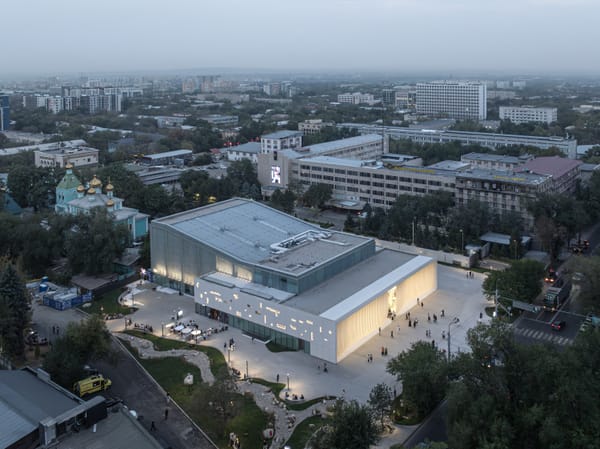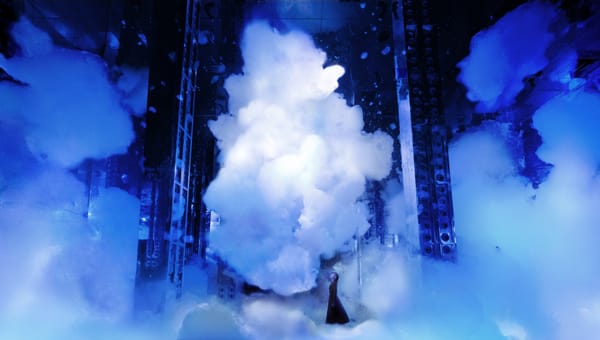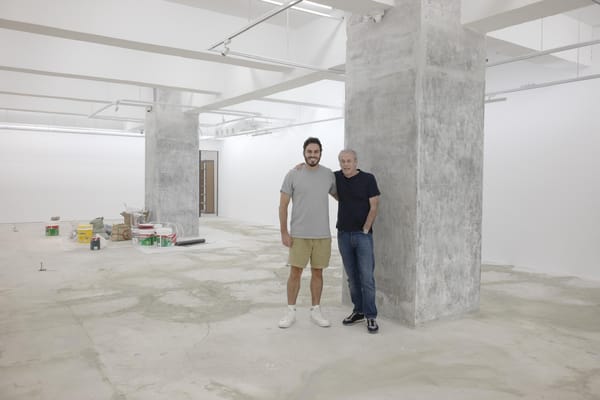People
The Art of Memory: Interview with Trần Trọng Vũ
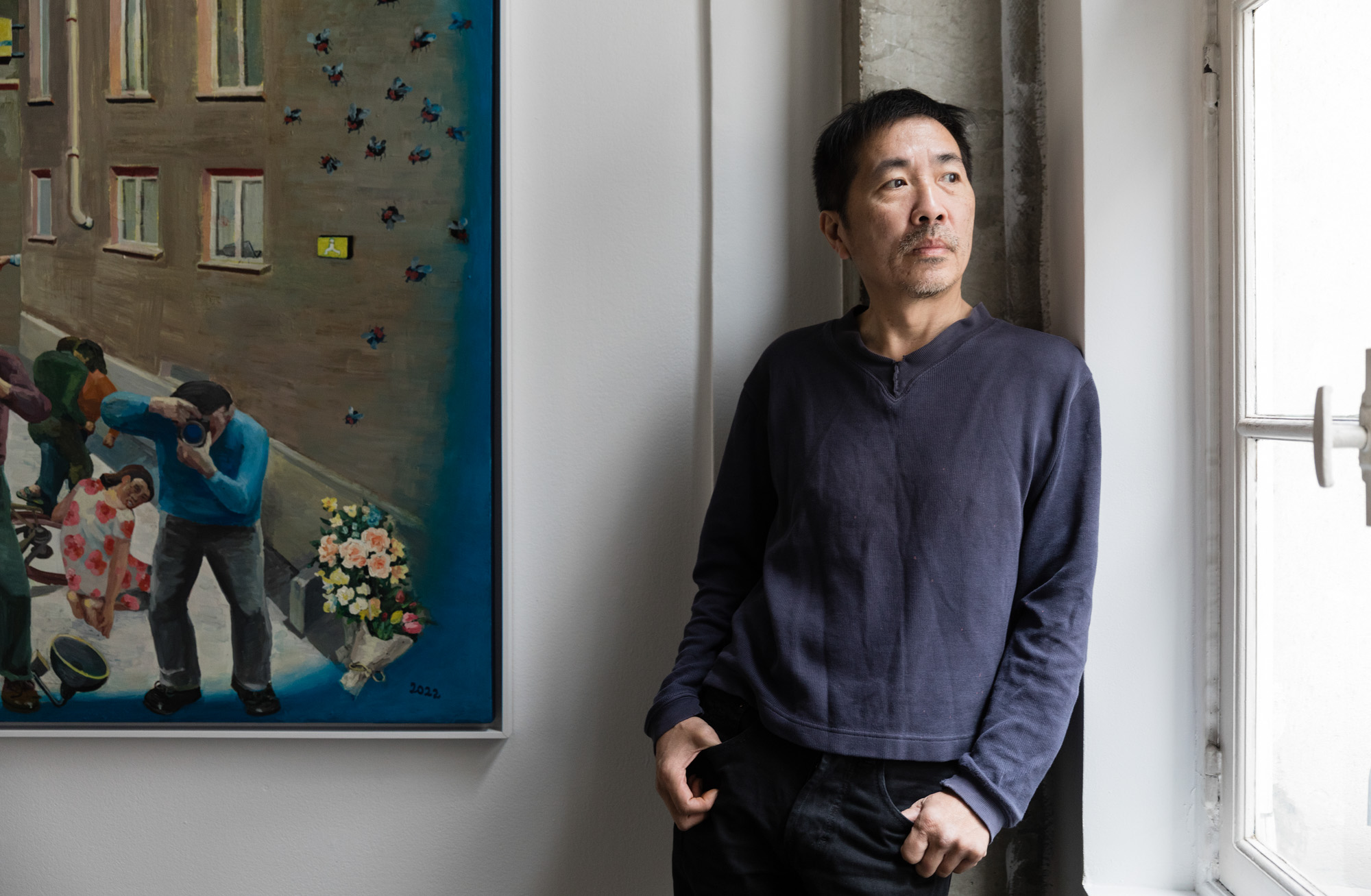

The exhibition “Tôi & Moi,” held last October across the three floors of Paris A2Z Art Gallery, was a physical representation of Vietnamese artist Trần Trọng Vũ’s artistic journey, which was articulated along the trail of memory. As the youngest son of the celebrated Vietnamese poet Trần Dần, Vũ was among the first artists who left Vietnam after the country’s 1986 economic reform Đổi Mới, to study art in France. Europe was still shaken by the fall of the Berlin Wall then, but the artist barely noticed, as he came from a completely different reality, and he was almost oblivious to the outside world. In Vietnam, his reality used to be like the colors and smiles found on the communist propaganda posters—flat, radiant, but fake—all of this later found expression in his work.
Vũ’s practice consists mostly of painting and installation, featuring reflective words paired with emotionless, slightly creepy faces, which belong to the artist’s imaginary “colorful brainwashing campaign.” After his father died in 1997, the artist started incorporating phrases from Trần Dần’s writings into his paintings, mimicking the use of slogans on propaganda posters but with a twist, be it a parody or a pun.
It has been over three decades now that Trần Trọng Vũ has lived in France. “Tôi & Moi,” his first solo in Paris, retraced a thread through personal and collective history, where individual memories and projections met nationalistic nightmares and the Vietnamese subconscious. Through a selection of works from 2002 to 2022, we saw how the artist tackled his own Vietnamese identity through the lens that belongs to French existentialism, dating back to Albert Camus’s idea of the “absurd.”
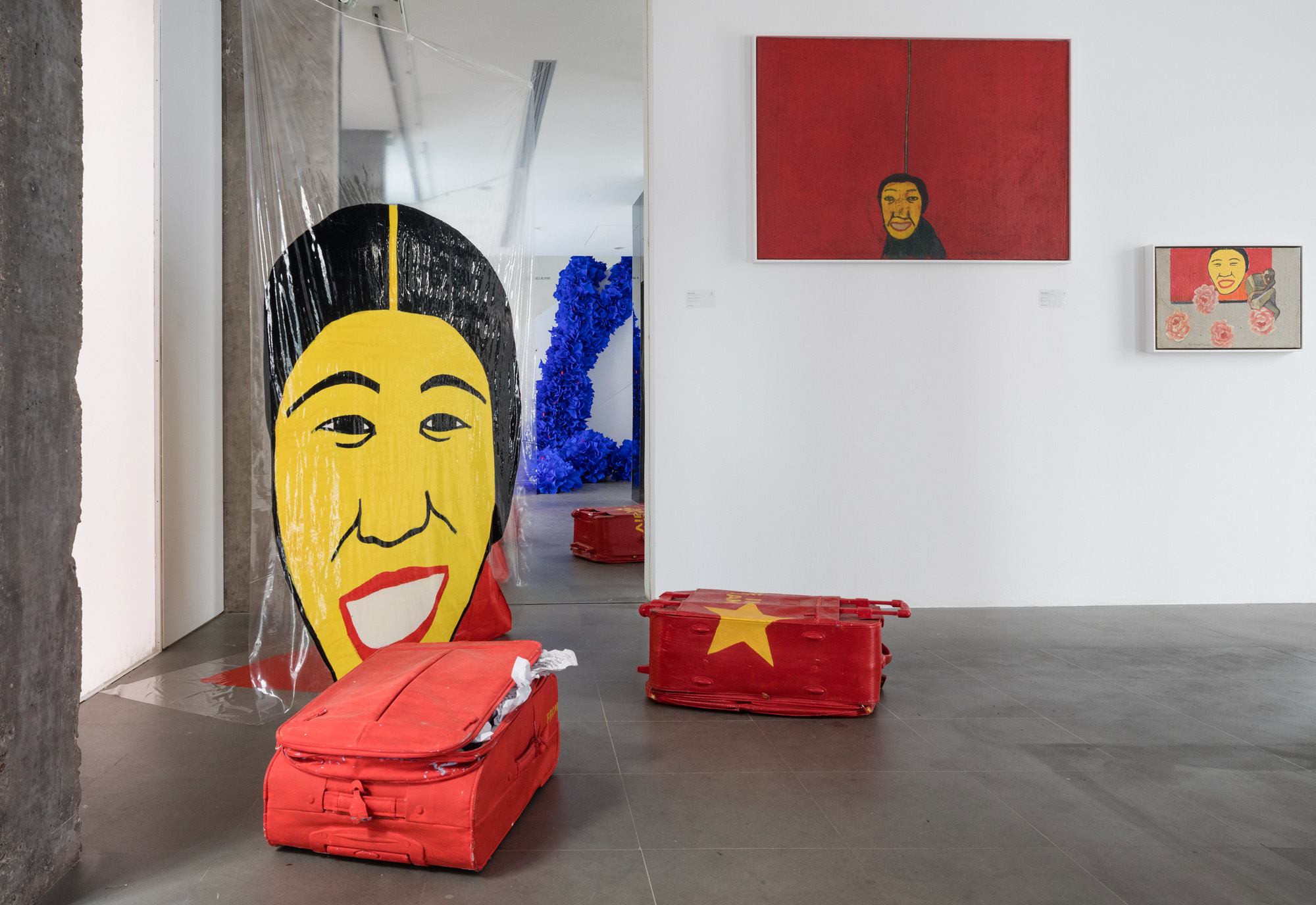
You come from a family of intellectuals, and your father was a poet. Were you making art as a child? What is your relationship with texts, which are often seen in your paintings as little slogans or short and punchy lines?
I began to paint when I was a little older, but I did read and write a lot before painting. Later on, I abandoned writing to dedicate myself entirely to the visual arts. I don’t have much time to read and write right now, but in some of my paintings, I do use texts. I do it when I feel the image is not enough, and I find a way to have the writing and the image complete each other. But overall, I don’t need to write; I’d say that the alley of all my reflections has become painting.
You studied art at the Vietnam University of Fine Art and even taught there from 1987 to 1989, before leaving for a scholarship in France. What was art education like in Vietnam back then?
In the 1980s, the country was locked and everything was censored. In art school, we mostly learned about the technique, the craft. The goal was to become a talented painter and make a job out of it, but we didn’t learn anything about aesthetic theory or the meaning of art. It was definitely not about expression.
Your father’s influence was very important in your life. Did that inform also your socio-political and critical lens on the realities of Vietnam?
For me, art is not politics. It’s something entirely different. Besides, everything I was exposed to growing up in Vietnam in terms of art didn’t include a socio-political critique. It was only when I moved to France that I really felt compelled to share my father’s lesson and really talk about Vietnam. Strangely, this became a necessity that only surfaced when I left the country.
%20%C2%A9%20A2Z%20Art%20Gallery.jpg)
You moved to France in 1989. Has your way of relating to your own memories of Vietnam changed over time, with you traveling back to the country?
I don’t know if it has really changed. I always had the same relationship with my memories, and perhaps with the country itself. Vietnam is still a very communist country. The problems remain there after 30 years. The politics is more or less the same. There is still censorship. Of course, the economic situation is improving for the country, and it’s especially benefitting certain individuals, but you also have a lot of very poor people, so there is a much deeper divide. Cities are becoming bigger, and life has become expensive now. If I have to mention a significant change in my own relationship with Vietnam, I’d say it’s with the people. Most Vietnamese seem to be speaking about money and business all the time, and it wasn’t like that 30 years ago.
Do you think this applies also to the art scene?
The art scene has been growing, also thanks to the internet and social media. In my time there was nothing. When I lived in Vietnam, we were completely disconnected from the global art world. We thought painting in Europe was still all about portraits and still life. And when I arrived in Paris, I realized that while, of course, painting still existed, the cultural discourse around visual arts had very much evolved. I was in a bit of shock, but I liked it. I learned a lot over time and tried a lot of different mediums, but strangely I seem to always circle back to painting.
Why did you name your solo show “Tôi & Moi” at A2Z gallery?
It’s the first time I have had a show with both paintings and installations. My installation work is an extension of my painting practice, giving it another dimension. The title “Tôi & Moi” is a pun between the French “Tôi & Moi,” meaning “You and Me,” and “Tôi,” which in Vietnamese means “I.” The title encapsulates my double nature, which is Vietnamese but also French, having lived in Paris for so many years.
%20%C2%A9%20A2Z%20Art%20Gallery.jpg)
In paintings such as Programme de l’après-midi (2010) and Mémoire de la Chambre (2022), you depict the face of a smiling woman with yellow skin and red lips. Who is this figure portrayed in your paintings? Why did you choose to focus on her facial features?
In the first section of the show, dedicated to memories, there were a lot of Asian faces, as they were depicted by communist propaganda. Those frozen smiles have always been very inspiring for me. I also wanted to use the colors of propaganda posters, which were always primary colors—yellows, reds, and blues. These come directly from memories. For me, they almost transcend thought. I have an installation with suitcases, titled The luggages without destination (2011), which represent my memory of leaving Vietnam. In another painting, At the farm (2002–22), I depict people who get water on their heads, symbolizing the brainwashing we all were subjected to back in the day and the persistent ideology.
The role of memory is central in your work. What’s your own conception of memory?
It is something that grew with me—words, colors, moments that we remember as what used to be our daily life. I think that for myself the memory of my past remains intact, but at the same time it also keeps evolving, it continues to grow and come to mean different things as I acquire life experience. It informs all our present choices. I believe that one cannot live without the past.
,%20exhibition%20-%20_Story%20of%20Vu_%20%C2%A9%20Tran%20Trong%20Vu_.jpg)
What other shows do you have going on at the moment?
Currently, I have a show in Hanoi called “Story of Vû” on view until February 25. I’m exhibiting some paintings and installations with the theme of “irrealistic realism” to represent Vietnamese reality, which is a bit crazy or pervaded by a sense of the absurd, I would say. In March, I will also participate in a group show at A2Z Art Gallery for Art Paris 2023, at the Grand Palais Éphémère.

